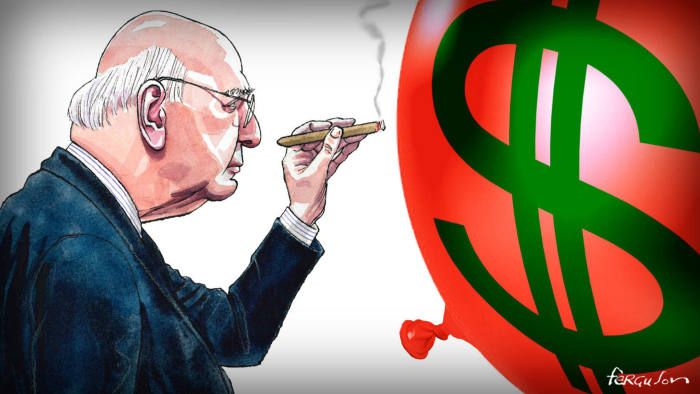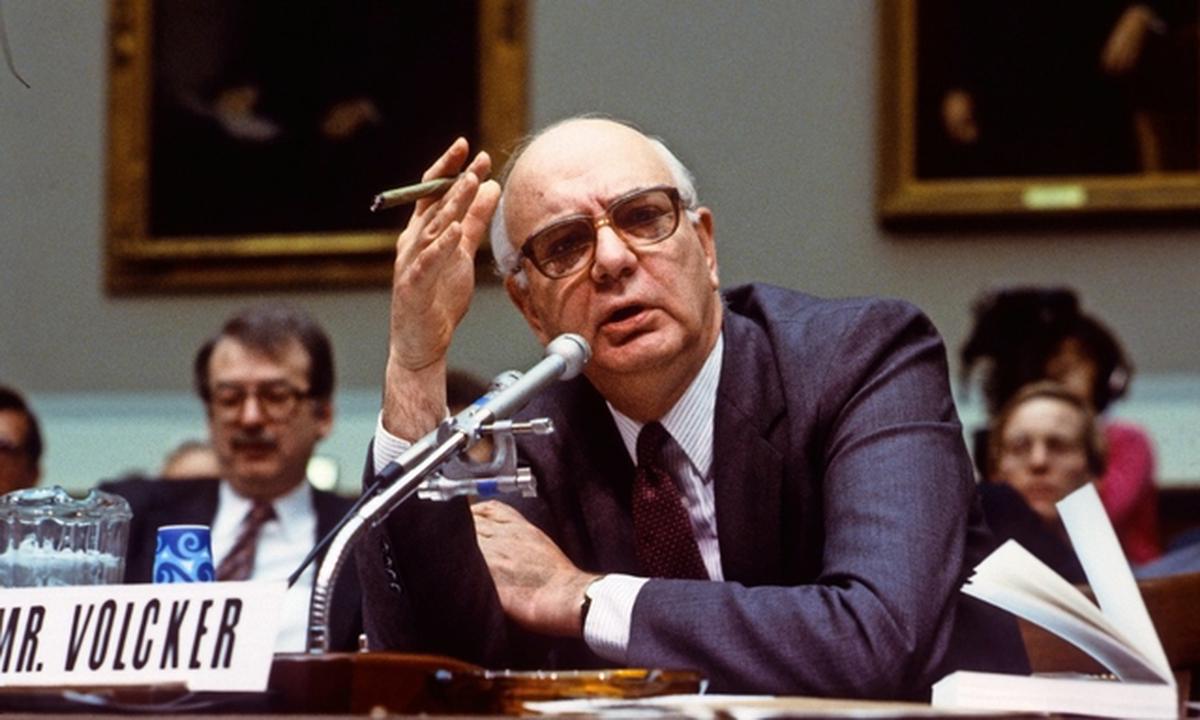
WSJ, By Thomas J. Sargent and William L. Silber, Jan. 11, 2022 6:25 pm ET
As in the early 1980s, new realities test the idea that interest rates reflect ‘rational expectations.’

The interest rate on the 10-year U.S. Treasury note hovers around 1.75% while the annual rate of inflation nears 7%, suggesting that investors believe high inflation is temporary. Evidently the market expects the Federal Reserve will soon bring inflation back to within a narrow band centered on 2% a year, despite the surge in federal deficits and the central bank’s monetization of a large fraction of those deficits. Today’s low interest rates “forecast” low inflation, a “rational expectations” idea that now comforts the Fed. But the central bank shouldn’t feel too complacent.
The Fed confronted a similar situation in the early 1980s, but in reverse. Chairman Paul Volcker convinced his colleagues on the Federal Open Market Committee to raise short-term interest rates to extinguish double-digit U.S. inflation and the associated double-digit long-term interest rates. Volcker and the FOMC had promised in public that measures to tighten money and credit weren’t one-time actions but part of a permanent strategy to arrest inflation. They reasoned that once the market understood the FOMC meant business, long-term interest rates would quickly fall to reflect the prospective decline in inflation implied by the FOMC’s strategy. They were in for a nasty surprise.
Long-term interest rates didn’t decline quickly. The 10-year Treasury note averaged 11.5% in 1980 and rose above that level in 1984, despite a decline in the rate of inflation from more than 12% in 1980 to less than 4% in 1984. The failure of interest rates to reflect the new monetary reality deeply troubled Volcker and the FOMC. One member complained during internal discussions early on about long-term interest rates going “up instead of coming down.” The market seemed not to believe that the Fed would stick to its guns, and instead put its money on the view that the same forces that caused the 1970s Fed to fuel high inflation would make the Volcker-led FOMC do the same. Investors refused to believe that a new monetary regime had arrived with Volcker, betting that policy would revert back to past behavior.
Volcker’s imperfect credibility probably raised the cost of stamping out the 1970s inflation. If the market had more quickly understood Volcker’s persistence as an inflation fighter, the recessions of the early 1980s wouldn’t have been so deep. In addition, the “rational expectations’’ theory that long-term interest rates provide good forecasts of average inflation would have worked better. Instead, interest rates remained too high for too long as predictors of inflation. It was 1986 before the 10-year note rate averaged in single digits.
We worry that today’s situation is the flip side of the Volcker experience. Forty years of price stability have given breathing room to today’s Federal Reserve, but U.S. interest rates could again provide erroneous forecasts of inflation. Most market participants have apparently played down the possibility that we are in a new monetary and fiscal regime, one in which policy makers don’t worry enough about large deficits and excessive money creation and new purposes like addressing climate change distract the Fed from inflation. We hope our fears are misplaced, but if they aren’t, the new reality of higher inflation will eventually take hold, and the 10-year rate will jump to reflect that regime. History teaches that central bank credibility usually moves slowly in both directions.
Mr. Sargent is a senior fellow at the Hoover Institution, New York University professor, and a winner of the 2011 Nobel Prize in Economics. Mr. Silber is a senior advisor at Cornerstone Research and author most recently of “The Power of Nothing to Lose.”
